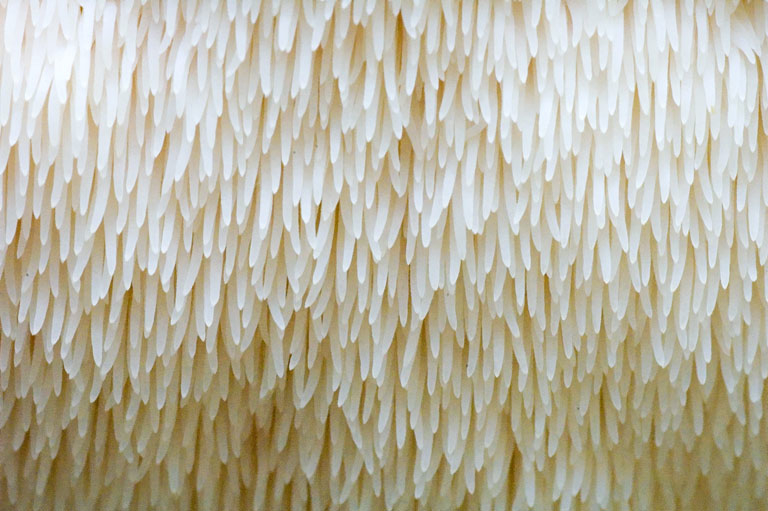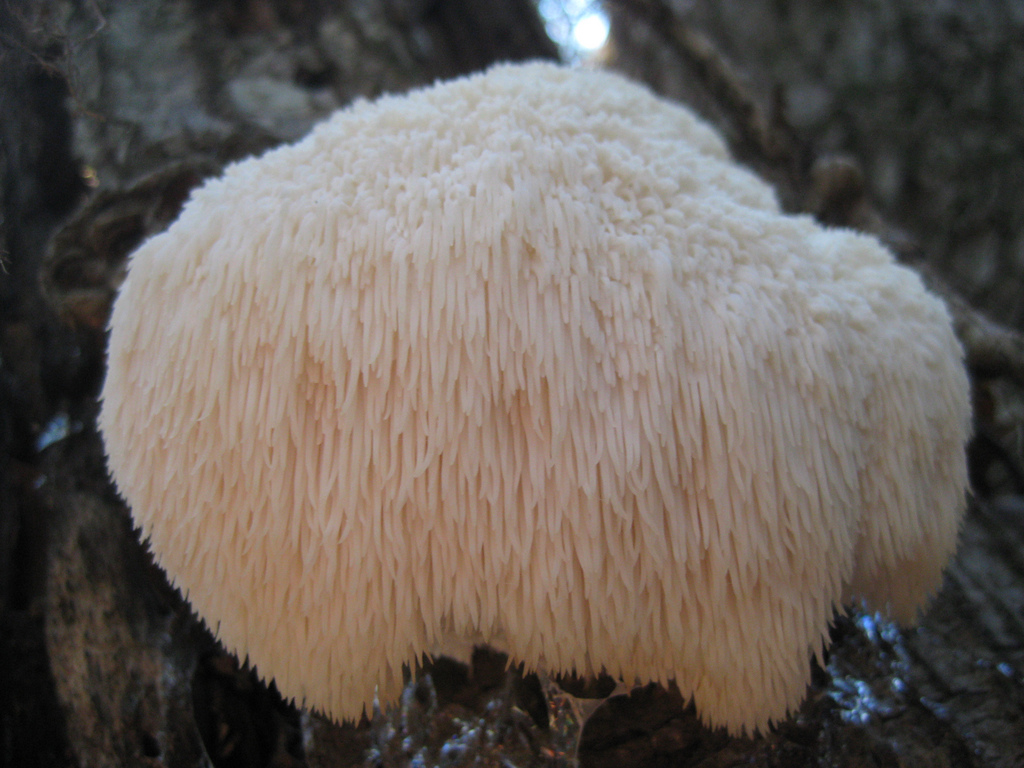Lion’s Mane Mushroom
This pristine white fungus might have neuroprotective properties.

A closeup on a lion's mane mushroom. Photo by Paul Stamets
The lion’s mane—also called the bearded mushroom, or yamabushitake in Japanese—is a pristine white fungus found in woodlands all over the world. The species (Hericium erinaceus) is easily identifiable for its cascading spines, which are pliable and feel like rubber.
“I describe it as one of nature’s best examples of grace and elegance,” says mycologist Paul Stamets, author of six books on fungi and director of research at mushroom retailer Fungi Perfecti. “When you touch them, each spine is very, very delicate and can bend, but as a conglomerate of thousands of these little spines, they’re quite hefty and firm.”
And besides being a good source of protein like other mushrooms, several studies suggest that the lion’s mane can benefit neural and mental health. “I believe it to be the first ‘smart’ mushroom,” Stamets says.

For instance, research by Hirokazu Kawagishi, a biochemistry professor at Shizuoka University in Japan, and colleagues identified compounds in the mushroom that induced the synthesis of proteins called nerve growth factors, which promote nerve survival and proliferation (the work was done in vivo as well as in rats).
Kawagishi also conducted a small, preliminary clinical trial in which six out of seven patients with dementia showed physical and cognitive improvement after eating soup containing the mushroom for six months on a daily basis. (For a review of Kawagishi’s work, appearing in Drugs of the Future in 2008.)
Meanwhile, a double-blind, placebo-controlled study, published in Phytotherapy Research in 2009, found that the fungus helped improve mild cognitive impairment in a small group of Japanese men and women aged 50-80. Further, a randomized, double-blind, placebo-controlled study of 30 women, appearing in 2010 in Biomedical Research, suggested that the species has the potential to reduce depression and anxiety.
While more research is necessary to establish just how beneficial H. erinaceus might be to our brains, the mushrooms make for good eatin’. They taste like lobster or shrimp when cooked, says Stamets, and he suggests caramelizing them in olive oil, de-glazing them in sake wine, and then finishing them with butter when cooking. He also warns to avoid eating raw ’shrooms—“you get virtually no nutritional benefit” compared to when they’re cooked.
You can try foraging for the mushroom in late summer into fall—there are no poisonous look-alikes, according to Stamets—but they decompose quickly. They’re also hard to find in stores, so Stamets suggests growing your own. It’ll be worth it. “They’re super delicious,” he says.
Chau Tu is an associate editor at Slate Plus. She was formerly Science Friday’s story producer/reporter.